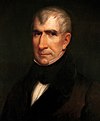Related Research Articles

The Battle of the Thames, also known as the Battle of Moraviantown, was an American victory in the War of 1812 against Tecumseh's Confederacy and their British allies. It took place on October 5, 1813, in Upper Canada, near Chatham. The British lost control of Southwestern Ontario as a result of the battle; Tecumseh was killed, and his confederacy largely fell apart.
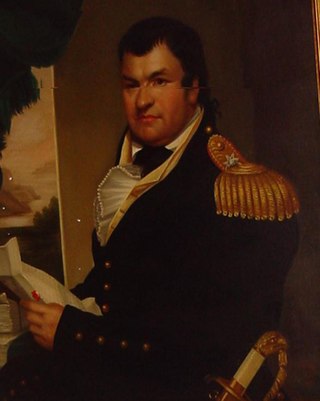
Duncan McArthur was a military officer and a Federalist and National Republican politician from Ohio. He served as the 11th governor of Ohio.

The 3rd United States Infantry Regiment is a regiment of the United States Army. It currently has three active battalions, and is readily identified by its nickname, The Old Guard, as well as Escort to the President. The regimental motto is Noli Me Tangere. The regiment is a major unit of the Military District of Washington (MDW).

The Second Battle of Sacket's Harbor, or simply the Battle of Sacket's Harbor, took place on 29 May 1813, during the War of 1812. A British force was transported across Lake Ontario and attempted to capture the town, which was the principal dockyard and base for the American naval squadron on the lake. Twelve warships were built here. The British were repulsed by American regulars, militia, marines and sailors.
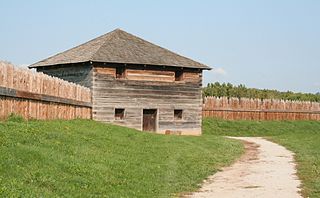
The siege of Fort Meigs took place in late April to early May 1813 during the War of 1812 in northwestern Ohio, present-day Perrysburg. A small British Army unit with support from Indians attempted to capture the recently constructed fort to forestall an American offensive against Detroit, and its Fort Detroit in the Great Lakes region which the British from the north in Canada had captured the previous year. An American sortie and relief attempt failed with heavy casualties, but the British failed to capture the fort and were forced to raise the siege.

The Battles of Frenchtown, also known as the Battle of the River Raisin and the River Raisin Massacre, were a series of conflicts in Michigan Territory that took place from January 18–23, 1813, during the War of 1812. It was fought between the United States of America and a joint force of British and Native Americans near the River Raisin in Frenchtown.

The Battle of Fort Stephenson in August 1813 was an American victory during the War of 1812. American forces successfully defended the fort in August 1813; it guarded an important supply depot. It was located on the west bank of the Sandusky River more than 10 miles upstream from Sandusky Bay in what is now Ohio. The town of Fremont, Ohio developed around the site.

The Regular Army of the United States succeeded the Continental Army as the country's permanent, professional land-based military force. In modern times the professional core of the United States Army continues to be called the Regular Army. From the time of the American Revolution until after the Spanish–American War, state militias and volunteer regiments organized by the states supported the smaller Regular Army of the United States. These volunteer regiments came to be called United States Volunteers (USV) in contrast to the Regular United States Army (USA). During the American Civil War, about 97 percent of the Union Army was United States Volunteers.
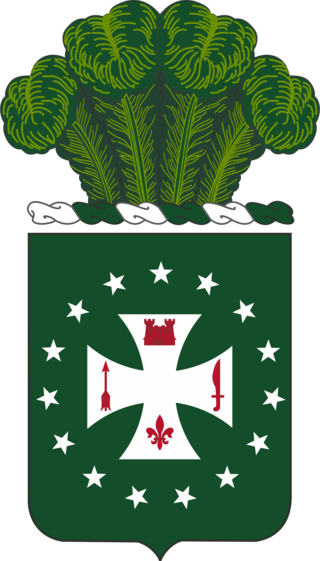
The 4th Infantry Regiment is an infantry regiment in the United States Army. It has served in the United States Armed Forces for approximately 200 years.
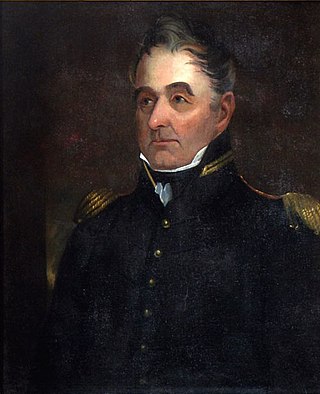
James Winchester was an American military officer, entrepreneur and statesman. He served in the Continental Army during the American Revolutionary War and was promoted to the rank of brigadier general during the War of 1812. He operated a shipping business, held various offices, and was one of the co-founders of the city of Memphis.

The 10th Maine Infantry Regiment was mustered in for two years of service at Portland, Maine, on October 4, 1861, by then-Major Seth Eastman. It was mustered out on May 8, 1863, also at Portland. The regimental commander was Colonel George Lafayette Beal. The 10th Maine was a re-organization of the 1st Maine Infantry, a regiment primarily composed of men with two-year enlistments that was mustering out after completing three months of Federal service. Eight companies of the 1st Maine were retained in service, with Companies A and D replaced by newly recruited companies.

The Ohio Army National Guard is a part of the Ohio National Guard and the Army National Guard of the United States Army. It is also a component of the organized militia of the state of Ohio, which also includes the Ohio Naval Militia, the Ohio Military Reserve and the Ohio Air National Guard. The Ohio Army National Guard consists of a variety of combat, combat support, and combat service support units. As of September 2010, its end strength exceeded 11,400 soldiers. Its headquarters is the Beightler Armory in Columbus, Ohio. Many units conduct Annual Training at Camp Grayling, Michigan.

Paschal Hickman was an American military officer who was killed in the Massacre of the River Raisin, an important event in the War of 1812. Hickman County, Kentucky is named for him.
The history of the United States Army began in 1775, as part of the United States Armed Forces. The Army's main responsibility has been in fighting land battles and military occupation. The Corps of Engineers also has a major role in controlling rivers inside the United States. The Continental Army was founded in response to a need for professional soldiers in the American Revolutionary War to fight the invading British Army. Until the 1940s, the Army was relatively small in peacetime. In 1947, the Air Force became completely independent of the Army Air Forces. The Army was under the control of the War Department until 1947, and since then the Defense Department. The U.S. Army fought the Indian Wars of the 1790s, the War of 1812 (1812–15), Mexican–American War (1846–48), American Civil War (1861–65), American Indian Wars, Spanish–American War (1898), World War I (1917–18), World War II (1941–45), Korean War (1950–53) and Vietnam War (1965–71). Following the Cold War's end in 1991, Army has focused primarily on Western Asia, and also took part in the 1991 Gulf War and war in Iraq, and the war in Afghanistan.

The River Raisin National Battlefield Park preserves the site of the Battle of Frenchtown as the only national battlefield marking a site of the War of 1812. It was established as the 393rd unit of the United States National Park Service under Title VII of the Omnibus Public Land Management Act, which was signed into law on March 30, 2009. The park is located in the city of Monroe in Monroe County, Michigan. It was designated as a Michigan Historic Site on February 18, 1956 and was added to the National Register of Historic Places on December 10, 1982. The house at 1403 East Elm Avenue was added to the National Register listing in 2019. It officially began operation as a national park unit on October 22, 2010.
The 123rd Ohio Infantry Regiment, sometimes 123rd Ohio Volunteer Infantry was an infantry regiment in the Union Army during the American Civil War.
Roundhead, also known as Bark Carrier, Round Head, Stayeghtha, and Stiahta, was an American Indian chief of the Wyandot tribe. He was a strong member of Tecumseh's confederacy against the United States during the War of 1812. He died of unknown natural causes about a month or two before Tecumseh was killed at the Battle of the Thames.
Nathaniel Gray Smith Hart was a Lexington, Kentucky lawyer and businessman, who served with the state's volunteer militia during the War of 1812. As Captain of the Lexington Light Infantry from Kentucky, Hart and many of his men were killed in the River Raisin Massacre of January 23, 1813, after being taken prisoner the day before following the Battle of Frenchtown in Michigan Territory.
Benjamin Franklin Graves (1771–1813) was a politician and military leader in early 19th-century Kentucky. During the War of 1812, Graves served as a major in the 2nd Battalion, 5th Kentucky Volunteer regiment. Together with other officers, he commanded Kentucky troops in the Battle of Frenchtown on January 22, 1813, in Michigan Territory. This was part of an effort by Americans to take the British-controlled fort at Detroit, Fort Shelby. This battle had the highest number of American fatalities in the war: of 1,000 American troops, nearly 400 were killed in the conflict, and 547 were taken prisoner. The next day an estimated 30-100 Americans were killed by Native Americans after having surrendered.
William Atherton was an American soldier, rifleman and veteran of the War of 1812 from Shelbyville, Kentucky. He was a private in Captain John Simpson's company of the 1st Rifle Regiment. He served under William Henry Harrison. Atherton wrote a journal that detailed his war service within the Kentucky militia, including their defeat and subsequent massacre at River Raisin by opposing forces, and his subsequent capture and imprisonment.
References
- Cramer, C. H. (April 1937), "Duncan McArthur: The Military Phase", Ohio History, Ohio Historical Society, 46 (2): 128–147
- Hannings, Bud (September 2012), The War of 1812: A Complete Chronology with Biographies of 63 General Officers, Jefferson, North Carolina and London: McFarland, ISBN 978-0-7864-6385-5
- Sek, John (1996), The 17th Regiment of U.S. Infantry, archived from the original on 2007-10-11
